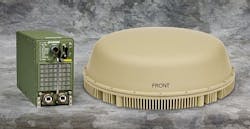Navy, Northrop Grumman take step towards deploying unmanned jet fighters aboard aircraft carriers
The biggest hurdle to landing a UAV on an aircraft carrier deck involves automating communications and flight procedures between the UAV and the ship, which traditionally have been done manually by aircraft pilots and aircraft carrier operations experts, explains Glenn Colby, the aviation/ship integration lead at Naval Air Systems Command. "We have to ensure that the software controlling these new systems can recognize and respond correctly to every type of contingency," Colby says.
During the tests aboard the aircraft carrier, Navy and Northrop Grumman experts tested X-47B control software that was installed on a Beechcraft King Air 300 twin-engine turboprop aircraft, as well as on a Navy F/A-18 Hornet jet fighter-bomber.
Northrop Grumman won the Navy's UCAS-D contract three years ago. Last March the Navy issued a solicitation for the Unmanned Carrier-Launched Airborne Surveillance and Strike (UCLASS) program. UCLASS seeks to develop a carrier-based UAV by 2018 that is able to carry out intelligence, surveillance, and reconnaissance (ISR) missions, as well as light attack missions.
For more information contact Northrop Grumman Aerospace Systems online at www.as.northropgrumman.com, or Naval Air Systems Command at www.navair.navy.mil.
